

Gloster Meteor F3

The Gloster Meteor was the first and only operational jet fighter to actually enter combat in WWII for the Allies. Its first flight occurred in March of 1943 and by July of 1944 the first production Meteor, the F1, went into service. They were relatively successful in downing V1 rockets. The F1 was replaced by the F3 which had Rolls Royce engines, a revised canopy style and increased fuel capacity. 210 F3's were produced The F3's were introduced on the Belgium front in January of 1945 to intercept the Me 262, however by that time the Luftwaffe was sufficiently weakened that the F3's never engaged the 262 in combat. They were mostly used in reconnaissance and air to ground support activities. With its ejection seat and other modern features it served as a basis for development of post war British jets.
The Kit
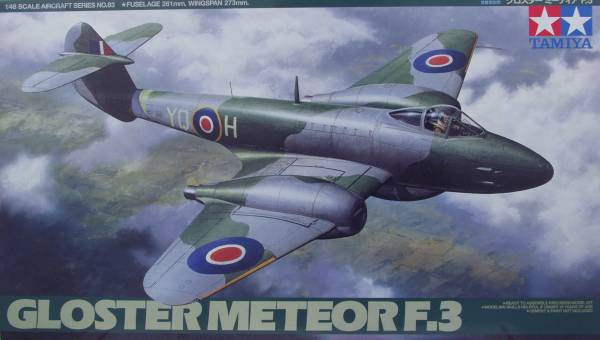
The Tamiya kit comes in a typical Tamiya sturdy top open two part box with attractive artwork on the top. Inside we find three bags of dark gray plastic and one with the clear parts. Each bag has one sprue except for one which has two duplicate sprues. The parts are molded with recessed panel, fastener and rivet detail. The fabric detail on the rudder is not too overdone and should look OK under a coat of paint. The parts are nearly flash free with just a hint of flash on a couple parts and the usual parting lines on the smaller parts. I found some sink marks on the upper wing near the engine nacelle where the wheel well detail is molded on the bottom side that needs to be filled. One side was worse than the other. Otherwise there was no other surface defects found and the finish is smooth and glossy. I found some ejector pin marks inside the nose wheel doors but being lazy I usually just consider them as lightening holes and leave them be. How often do you pick up your models and look at the insides of the gear doors?
All of the flight control surfaces are fixed but the speed brakes are separate and can be attached open or closed. The cockpit is moderately well detailed and comes with a pilot figure. The kit also includes a weight to keep it from being a tail sitter. The kit has two reasonably well detailed engines and the top access panels are separate so they can be displayed. The kit comes with a belly mount fuel tank but based on what I have read other places the F.3 version never used the tank but I'm don't profess to be an expert so it's up to you to do your homework on that if you are so inclined. The kit has a total of 70 gray parts. the clear parts are thin and clear and in addition to the canopy, gun sight and assorted light lenses includes two clear engine bay covers in case you want to display the engines but don't want the leave the doors off. There are 9 clear parts for a total of 79 for the kit. See photo's below, duplicate sprues are not shown.
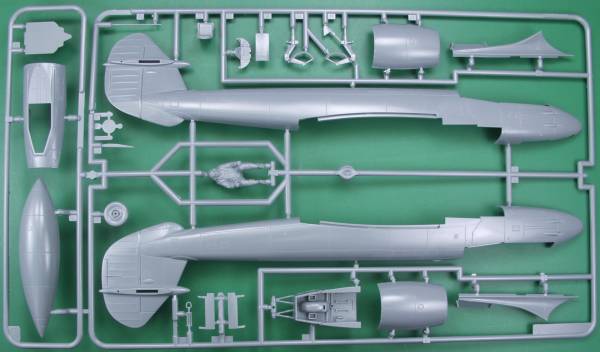
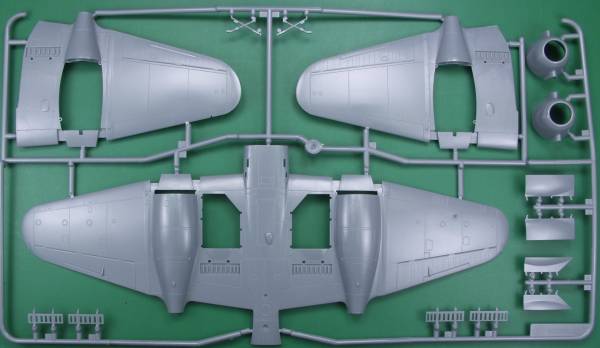
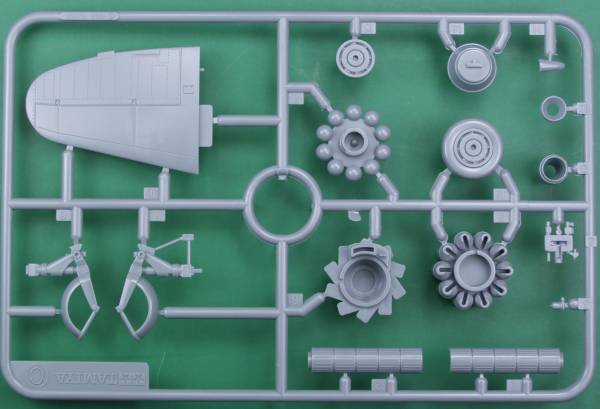
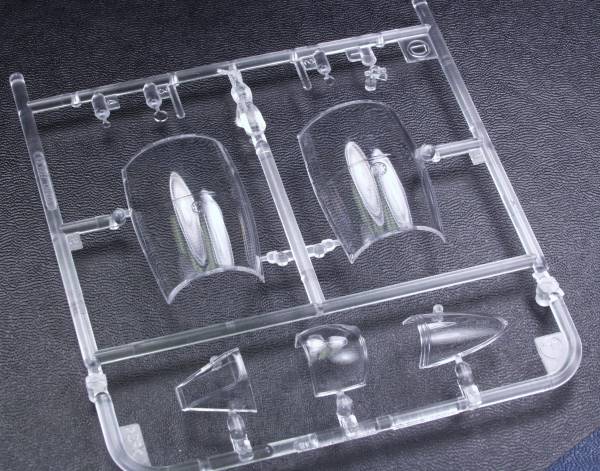
The decals are medium thickness, typical for Tamiya and are in register although they require you to install the meatball in the roundels which is usually what gets out of register. They include markings for two aircraft, one in the gray and green over gray and one all white that was used in Belgium. The sheet includes a good number of stencils and walk way markings, harness and instruments. See below.
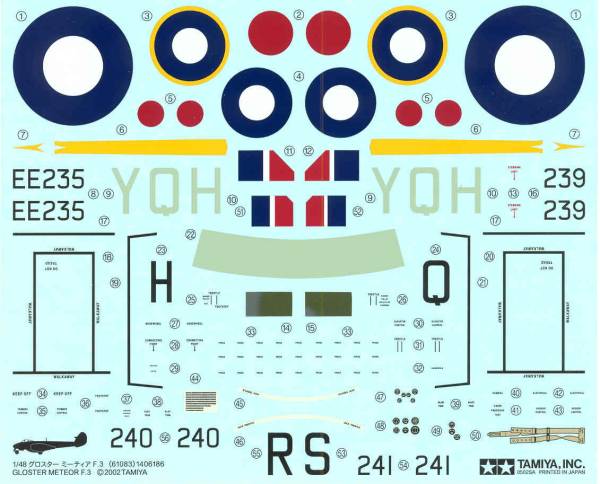
The instructions are typical Tamiya printed on a 10 1/2" x 33" page that is folded to create ten pages. Page one is history in multi-languages Page two lists tools, safety warnings, colors by name and Tamiya number. There are five an a half pages of assembly instructions with the balance devoted to painting a decal instructions. In addition to the main instruction sheet there is a 11 3/4" x 14" sheet printed on one side in full scale showing the camouflage patterns for the fuselage and upper wings. This is quite nice as it could be cut out and used as a mask for painting.
After Market Goodies
I only chose one after market item for this kit and that is an Eduard Zoom color set FE 213 primarily for instrument panel. As you can see below it has a number of other color items to dress up the front office. It looks like the film is supplied to provide an option of using it or the painted back panel. See below.
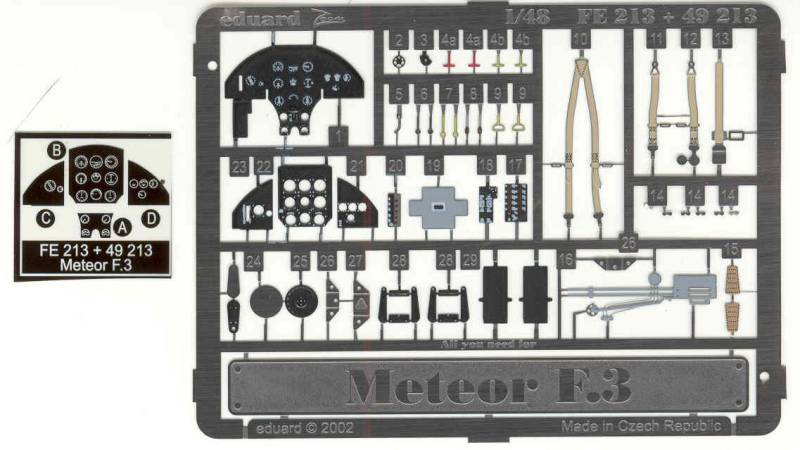
Conclusions
When ever I look at a Tamiya kit I always feel like it's a Rolls-Royce as it just seems to have a quality lacking in other kits and this one is no different. Well engineered, well packaged and well detailed. Highly recommended for modelers of all skill levels.
Links to kit build or reviews
A review / build can be found here and here.
References
"World War II Fighting Jets" by Jeffrey Ethell and Alfred Price
Updated 5/10/08